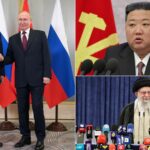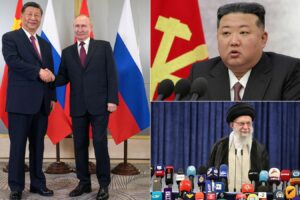As confrontation between Russia and the West intensifies and Russia’s military ambitions grow, developments in the former Soviet Union (FSU) region are increasingly relevant to geopolitics and energy security. Kazakhstan, in particular, has a significant transit position, in addition to supplying oil and gas exports to Europe and China. Kazakhstan’s troubled energy sector faces challenges that are being exacerbated by sanctions pressure on Russia, its main economic partner, and deteriorating Russian-Kazakh relations. All this directly affects the country’s socio-political stability, as evidenced by the massive unrest of January 2022. This Q&A discusses the current state of Kazakhstan’s energy sector, its domestic fallout, and geopolitical implications.
What role does energy play in Kazakhstan’s domestic stability?
On January 2, 2022, mass protests broke out in the western part of Kazakhstan after the price of liquefied petroleum gas doubled.[1] Local protests snowballed into nationwide unrest with economic and political demands. Authorities violently quelled the protests, but addressed the protesters’ initial demands and set the maximum price for liquefied gas for 180 days[2], accusing gas stations of speculative surcharges.[3] However, ongoing problems in Kazakhstan’s energy sector could lead to new upheavals. Although Kazakhstan ranks 19th in the world for gas reserves, 42 percent of the country’s population has no access to gas and burns coal.[4] Given harsh winters, this is a painful social problem. That is why the first protesters were car owners who lost affordable fuel and residential consumers who had to pay more for liquefied gas.
How can a country rich in oil and gas face fuel shortages?
Kazakhstan has large hydrocarbon reserves but poor processing infrastructure. Kazakh oil exports amount to roughly 1.4 million barrels per day.[5] Only 15 percent of Kazakhstan’s oil (processed at three large refineries) is sold domestically, as crude exports are more profitable.[6] Kazakh production of commercial gas in 2022 totaled 27.8 billion cubic meters (Bcm), while domestic consumption of commercial gas reached 19.3 Bcm and exports dropped down to 4.6 Bcm, portending a gas deficit.[7] The shortage is not caused by a lack of gas; instead, the challenge lies in the structure of the gas market and the strict caps on the gas price for consumers.[8] Domestic gas processing is unprofitable due to the rigid tariff regime[9], and the republic’s single gas processing plant is insufficient to meet growing domestic demand.[10]Moreover, Kazakhstan’s energy infrastructure is old. At the end of 2021, the depreciation of electricity, gas, steam, and hot water facilities was at a dangerous 72 percent.[11] In November 2022, an accident at the Ekibastuz TPP power plant left tens of thousands of residents without central heating in 30-degree frost.[12] The accident and the government’s sloppy response agitated Kazakh society. Rumors of corruption in the energy sector exacerbated social tensions.[13] If such incidents occur again, widespread resentment could trigger new social unrest.
Kazakh president Kassym-Jomart Tokayev has not supported Russia’s invasion of Ukraine. How is that impacting the Moscow-Astana relationship?
In January 2022, Russia sent more than 2,000 troops to Kazakhstan to help put down the anti-government unrest. Several weeks later, when Russia invaded Ukraine, Kazakhstan did not return the favor by supporting the invasion. Instead, Kazakh authorities first declared their neutrality with respect to the Russian invasion of Ukraine, and then pledged to comply with sanctions against Russia.[14] In the summer of 2022, during the St. Petersburg Economic Forum, Tokayev publicly stated that his country did not recognize the independence of the “quasi-state territories,” Donetsk People’s Republic (DPR) and Luhansk People’s Republic (LPR).[15] This angered Moscow, and Russian officials have regularly rebuked Kazakhstan’s leaders for their stance on the Ukraine war and have even made territorial claims.[16]
Verbal confrontations have quietened down. Kazakhstan’s energy sector remains highly dependent on Russia, forcing the country to compromise and maintain cooperation with Russia, cautiously weighing risks and benefits. Kazakhstan’s economy was hit hard by Russian sanctions: inflation skyrocketed, the economy contracted, the tenge was devalued, and the cost of Russian imports increased.[17]
How is Moscow exerting pressure on Kazakhstan?
Russia controls most of Astana’s oil exports, a significant contributor to the Kazakh economy. In 2020, 44 percent of the republic’s budget came from oil and gas.[18] Russia (24 percent Transneft and 12.5 percent Lukoil), Kazakhstan (20.75 percent), and several multinationals hold stakes in the Caspian Pipeline Consortium (CPC), which operates a pipeline that pumps oil from Kazakhstan to the Russian port of Novorossiysk[19]—from where Kazakhstan exports 80 percent of its oil.[20] After Tokayev refused to support Russian president Vladimir Putin’s invasion, numerous problems unexpectedly arose in CPC’s operations, which caused the Kazakh side to cut oil production. Many experts believe this may have been Moscow’s way of putting pressure on the Kazakh government and showing its dissatisfaction with Astana’s stance on the Ukraine invasion.[21]
How is Kazakhstan stabilizing its energy industry?
The Kazakh government is tightening regulation of the petroleum and liquefied gas markets to reduce price increases and shortages. It restricted fuel exports in 2022 and banned them in February 2023.[22] But to solve the problem, oil refinery capacity must increase. The situation is aggravated by Kazakhstan’s pledge to export 10 Bcm of gas annually to China.[23] Due to the gas deficit, during December 2022–January 2023 QazaqGaz had to stop exports to China and instead send gas to the domestic market and pay all the penalties.[24] Gas market reforms, announced in 2019, include long-term solutions[25] such as gasification and expansion of processing capacities domestically along with increasing gas imports from Russia and Turkmenistan. But amid slow progress, the only measure approved so far has been the gas price reform at the end of December 2022.[26]
To reduce energy dependence on Russia and diversify its oil exports, Kazakhstan announced plans to export oil through the Baku-Tbilisi-Ceyhan pipeline starting in 2023 and to increase oil transit through the Caspian Sea to Azerbaijan, Georgia, and Turkey.[27] These require expansion of the tanker fleet and the port of Aktau.[28] In 2022, Kazakhstan’s oil shipments via pipeline to China increased by 30 percent, but this is unlikely to sustain as China prefers to buy Russian oil at significant discounts.[29] In fact, Kazakhstan is planning to reduce oil exports to China.[30] Moreover, by February 2023 KazTransOil had started pumping oil from Kazakhstan to Germany via Poland through the Druzhba pipeline.[31] According to KazTransOil it had requested Russian oil pipeline company Transneft handle transit volumes to Germany this year of 1.2 million metric tons,[32] thus increasing dependence on Russia.
Is Kazakhstan able to reduce its dependence on Russia? What is the “gas union” proposed by Putin and who benefits from it?
Cooperation with Russia is increasing. In January 2023, an agreement was signed on a road map determining the main areas of gas cooperation between Russia and Kazakhstan, including the processing of Kazakh gas at Russia’s Orenburg gas plant and “the possibility of Russian gas supplies to Kazakhstan.”[33] Then, in February, Russia’s Lukoil signed a contract with Kazakhstan’s state-owned KazMunayGas that will see the two entities produce oil at the Kalamkas-Sea, Khazar, and Auezov fields located in Kazakhstan’s sector of the Caspian Sea.[34]
In November 2022, Putin proposed a “tripartite gas union” to Kazakhstan and Uzbekistan.[35] The Kremlin wants to use Kazakh and Uzbek gas transportation infrastructure[36] to penetrate Asian gas markets and replace the rapidly shrinking European markets. Another goal could be to use the gas lever to put pressure on Central Asian countries. While Russian officials publicly claim that the purpose of this union is supplying Russian gas to the two countries, sources suggest that Gazprom wanted to buy the gas transmission systems of Uzbekistan and Kazakhstan, offering them the rights to export gas to China in exchange for securing gas supplies to their own markets.[37]
Kazakhstan initially reacted cautiously to the idea of the gas union. The experience of Belarus and Armenia[38] shows that transition to the Gazprom infrastructure greatly increases energy dependence on Russia. But late last month QazaqGaz proposed that Gazprom “consider the possibility of creating a new transit gas pipeline along the route from Russia to China.”[39] The throughput capacity of the pipeline under discussion may reach 40 bcm per year, “while up to 10 billion cubic meters per year may be required to meet the needs of Kazakhstani consumers in the northeast of the republic.”[40]
Given the acute gas shortage, Kazakh authorities could continue to prioritize social stability over long-term political risks.
Source: Energy Policy















